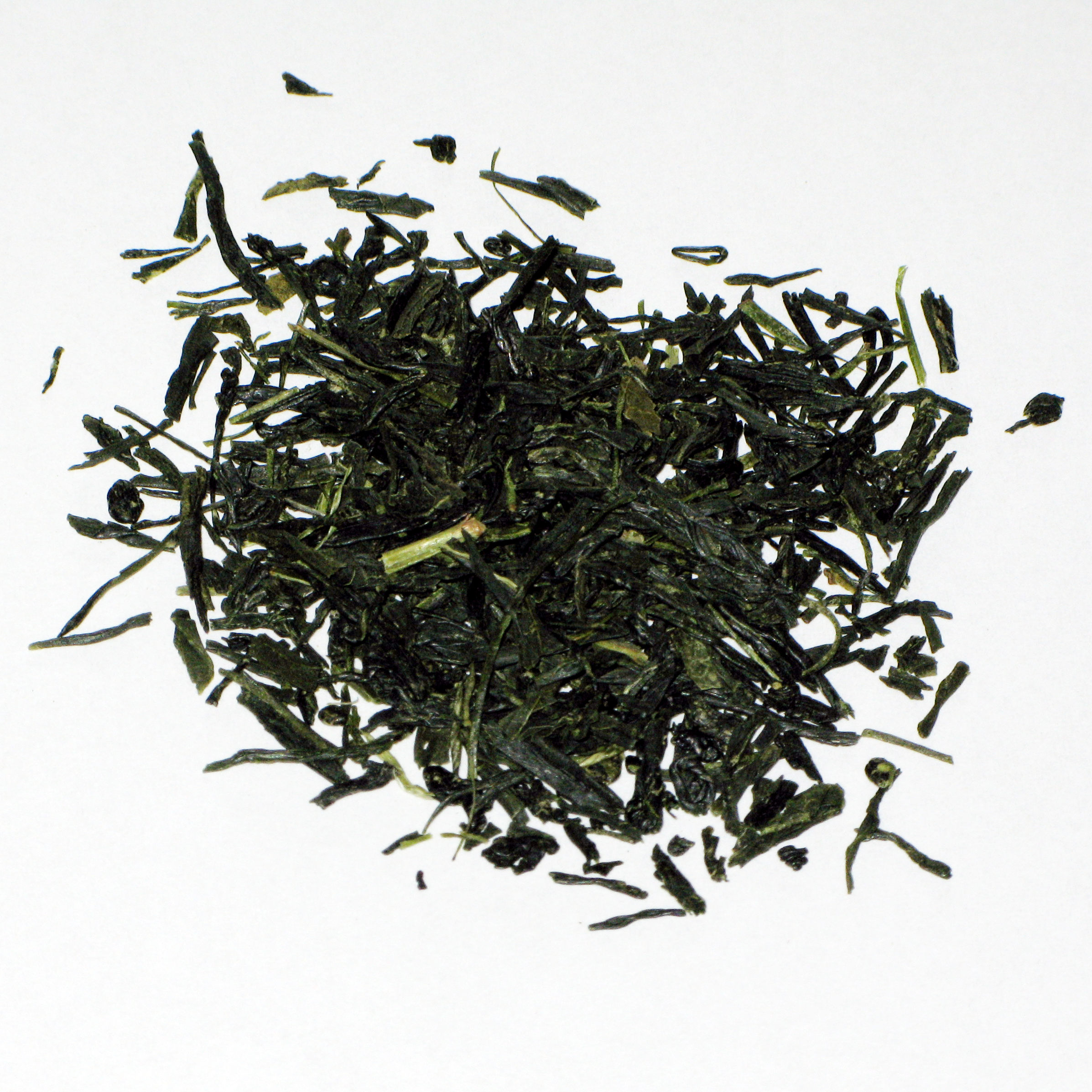So, tea is the most commonly drunk beverage in Japan. The japanese word for tea is (ocha) which usually means green tea. So here are some facts about green tea and other types of tea
Let's get this par-TEA started!
(This is the start of my terrible pun making)
- Green tea is a fundamental part of Japanese culture, it is now widely available everywhere. Restaurants will serve a complimentary cup of tea while you get seated, you can buy it in any convenience store like 7 Eleven and in all beverage vending machines.
- Depending on the position of the leaf on the plant, how the leaves were cultivated, steamed, dried and processed, the green tea can be classified as Ryokucha, Matcha, Houjicha, Konacha, Genmaicha, Oolongcha or Kocha
Lets go into more TEA-tail
Ryokucha
Ryokucha
- The timing of the harvest and the amount of sunlight the leaves are subjected to will choose which grade of green tea they are in
- Gyokuro is the highest grade of green tea. Gyokuro is shaded from the sun before being picked in the first round of the harvest
- Sencha is treated the same way as gyokuro leaves but they are not shaded from the sun before harvesting
 |
| Sencha leaves By Stefan Kühn (Own work) [CC BY-SA 3.0 (http://creativecommons.org/licenses/by-sa/3.0)], via Wikimedia Commons |
- Bancha is a lower grade of tea, these leaves are harvested in the later rounds of the harvest.
| Bancha leaves By Lutz 008 (Own work) [CC SA 1.0 (http://creativecommons.org/licenses/sa/1.0/)], via Wikimedia Commons |
Matcha
- This is a powdered green tea where only the highest quality leaves are used.
- They are dried, milled finely and when you want to drink it, you simply add hot water.
- Matcha is used in the tea ceremony
| Matcha powder By 121stephen (Matcha Tee) [CC BY-SA 3.0 (http://creativecommons.org/licenses/by-sa/3.0)], via Wikimedia Commons |
Konacha
- This is tea made of tea dust, tea buds and small tea leaves which have not been harvested
- Even though this is considered a lower grade of tea, it will still complement foods such as sushi
Hojicha
- This is a tea made out of roasted tea leaves.
- The roasting of the leaves gives the leaves a reddish brown colour, the heat starts a chemical reaction which releases a pleasant sweet smell.
 |
| Hojicha By myself (Own work) [Public domain], via Wikimedia Commons |
Genmaicha
- This is a green tea which also has roasted brown rice
- The genmai grains are roasted and mixed with tea leaves which add a yellowish colour and a distinctive flavour
- It is a popular alternative to green tea
| Genmaicha By No machine-readable author provided. Kyd assumed (based on copyright claims). [Public domain], via Wikimedia Commons |
Oolongcha
- This is actually a Chinese tea but it is also a popular beverage in Japan as well.
- The tea leaves here are left to oxidize and when they have oxidized enough, the leaves are steamed and roasted. This stops the oxidization of the leaves.
- So I guess you could say that Chinese tea is so good as it takes OOLONG time to prepare!
 |
| Oolongcha By Shizuha (Own work) [CC BY-SA 3.0 (http://creativecommons.org/licenses/by-sa/3.0)], via Wikimedia Commons |
Kocha
- Kocha is a tea similar to oolongcha but the leaves are left to oxidized even more so the leaves are even darker in colour compared to the oolongcha leaves.
- The tea itself is red in colour and is available in many Western style cafes and restaurants.
Now for the teas that do not come from the tea plant.
Mugicha
- This is a tea made from roasted barley.
- This is a tea which is more popular with children as it does not contain caffeine.
- I really like mugicha, the caffeine free tea brings out my inner tranquili-TEA!
Kombucha
- This is a tea made from sliced or dried kombu seaweed.
- It does not really taste of tea, it is more salty in taste.
- I have never had this tea before, maybe I should give this a chai!
Health benefits of green tea
Green tea is said to contain:
- Vitamin B
- Folates
- Manganese
- Potassium
- Antioxidants
But is it really a superfood (or superdrink in this case)?
According to the NHS website, green tea does not help prevent cancer. Although in 2015, there was an investigation into whether drinking green tea with a drug called Herceptin was effective in fighting breast and stomach cancer. The initial results were good so human trials will happen soon.
Green tea is said to help weight loss due to caffeine and the antioxidant called catechin . But in a 2012 review according to the NHS, there was no significant effect of weight loss from this hot beverage.
High cholersterol is thought to be lowered by drinking green tea. A review in 2013 found that daily consumption can lower cholesterol and blood pressure due to the catechins but the long term effects are unknown.
Green tea has been proven to lower blood pressure but whether it can prevent heart disease or strokes is not known
This fact about green tea is a fun one, a study in 2014 compared the use of green tea as a mouth wash to prevent tooth decay to the more commonly used antibacterial chlorhexidine. The results showed that they were both equally effective in preventing tooth decay
So, I guess that green tea is not really a superfood. But its still a really good drink.
Please put your tea based puns in the comments section, I'll have fun looking at all of the creativi-TEA!
